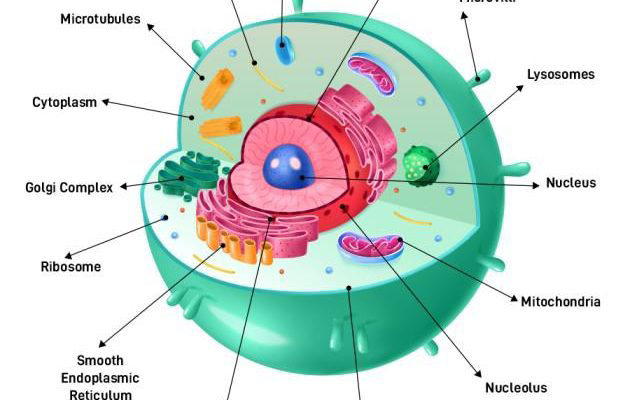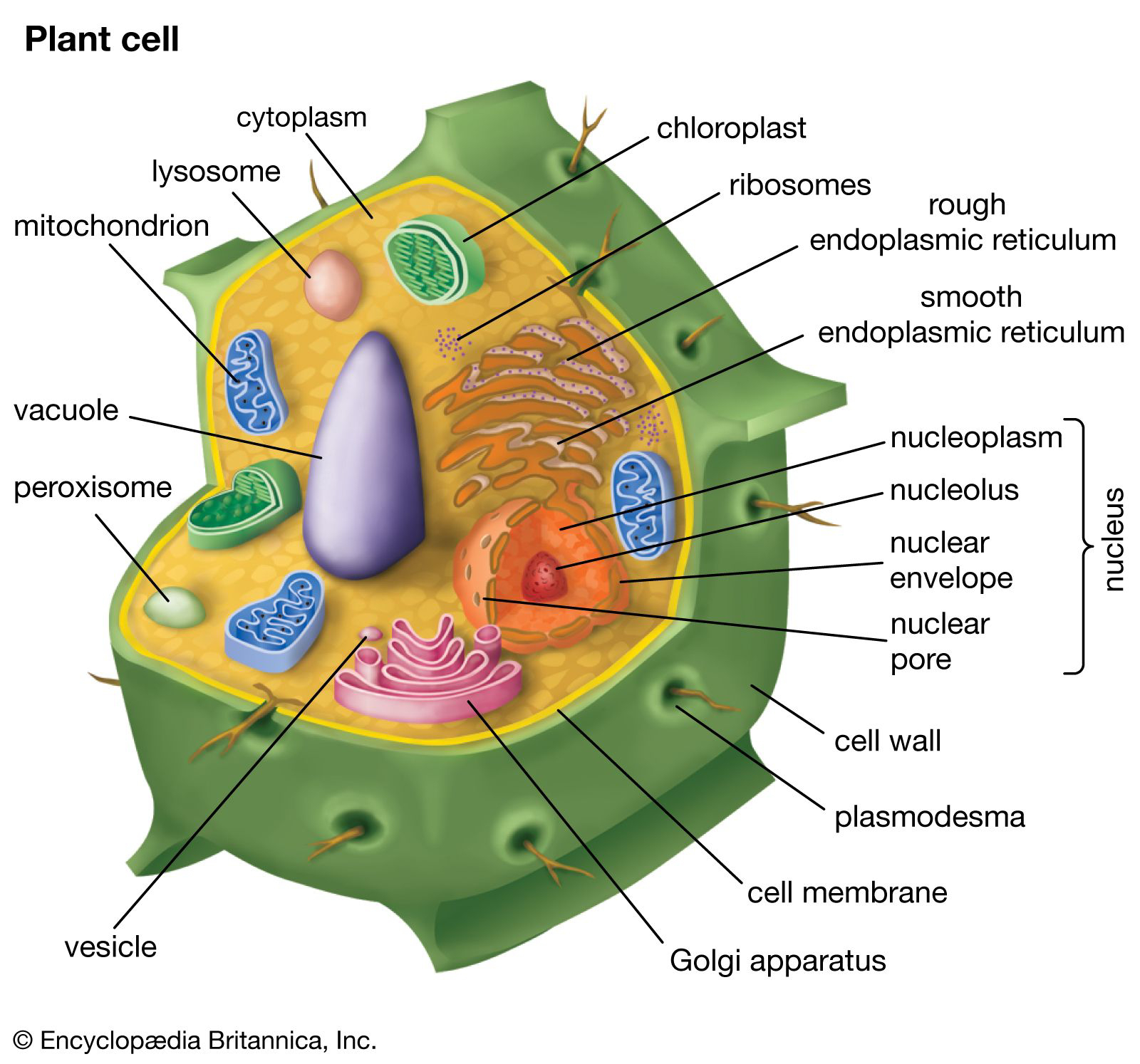Animal cell:-
An animal cell is a type of eukaryotic cell, which is the basic structural and functional unit of animals. It is one of the two major cell types found in living organisms, the other being plant cells. Animal cells are characterized by their complex internal structures and lack a rigid cell wall, which distinguishes them from plant cells.
The main components of an animal cell include:
1. Cell Membrane: The outer boundary of the cell that regulates the passage of substances in and out of the cell.
2. Cytoplasm: A gel-like substance that fills the cell and contains various organelles.
3. Nucleus: The control center of the cell, containing genetic material (DNA) that directs cell activities.
4. Mitochondria: Structures responsible for producing energy through cellular respiration.
5. Endoplasmic Reticulum (ER): A network of membranes involved in protein synthesis, lipid metabolism, and the transport of materials within the cell.
6. Golgi Apparatus: A stack of flattened membranes that modifies, sorts, and packages proteins for transport.
7. Ribosomes: Small structures involved in protein synthesis.
8. Lysosomes: Organelles that contain enzymes responsible for breaking down waste materials and cellular debris.
9. Vacuoles: Small fluid-filled sacs that store materials such as water, nutrients, and waste products.
10. Cytoskeleton: A network of protein filaments that provides structural support and helps with cell movement.
11. Centrioles: Structures involved in cell division and the formation of the spindle fibers.
These are some of the key components found in animal cells, although there are many more specialized structures and organelles depending on the specific cell type and function within the animal organism.
Plant cell:-
A plant cell is a type of eukaryotic cell that is the fundamental unit of structure and function in plants. Plant cells are similar to animal cells in many ways but also possess some unique features that enable them to perform specific functions related to plant life.
The main components of a typical plant cell include:
1. Cell Membrane: The outer boundary of the cell that regulates the passage of substances in and out of the cell.
2. Cell Wall: A rigid, protective layer located outside the cell membrane, providing structural support and protection to the cell.
3. Cytoplasm: A gel-like substance that fills the cell and contains various organelles.
4. Nucleus: The control center of the cell, containing genetic material (DNA) that directs cell activities.
5. Mitochondria: Structures responsible for producing energy through cellular respiration.
6. Endoplasmic Reticulum (ER): A network of membranes involved in protein synthesis, lipid metabolism, and the transport of materials within the cell.
7. Golgi Apparatus: A stack of flattened membranes that modifies, sorts, and packages proteins for transport.
8. Ribosomes: Small structures involved in protein synthesis.
9. Chloroplasts: Unique to plant cells, chloroplasts contain chlorophyll, the pigment responsible for photosynthesis. They convert sunlight, carbon dioxide, and water into glucose (sugar) and oxygen.
10. Vacuoles: Large fluid-filled sacs that store water, nutrients, and waste products. Plant cells typically have a large central vacuole that helps maintain cell turgidity and stores various substances.
11. Lysosomes: Organelles that contain enzymes responsible for breaking down waste materials and cellular debris.
12. Cytoskeleton: A network of protein filaments that provides structural support and helps with cell movement.
13. Plasmodesmata: Channels that connect adjacent plant cells, allowing for communication and transport of molecules between cells.
These are some of the primary components found in plant cells. However, it's important to note that plant cells can vary in structure and function depending on their specialized roles, such as root cells, leaf cells, or xylem cells.


Comments
Post a Comment